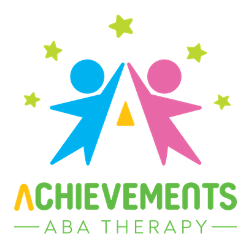The Power of Visual Supports in Child Development
In the world of Applied Behavior Analysis (ABA), it’s important to have clear plans and routines, especially for kids with autism But keeping track of progress and knowing what to expect can be tough. That’s where visual supports come in. They are super helpful guides that include things like visual schedules, behavior charts, and token systems. In this blog, we’ll talk about how these tools are like secret weapons in ABA therapy, helping kids feel more confident, reducing stress, and making everyday life clearer and more organized.
Understanding Visual Supports:
Visual supports are tools that use visual aids to convey information, expectations, and routines.
They provide a tangible and concrete way for children to understand abstract concepts and navigate their environment more effectively.
Visual supports can take various forms, including pictures, symbols, written words, or a combination of these elements.
Visual Schedules:
Visual schedules outline the sequence of activities or tasks in a structured format.
They help children understand what will happen next and prepare them for transitions.
Whether it’s a daily schedule, a routine for getting ready in the morning, or a schedule for completing homework, visual schedules provide predictability and reduce anxiety by offering a clear roadmap of the day’s events.
Behavior Charts:
Behavior charts are visual supports used to track and reinforce positive behavior.
They typically consist of a chart with columns for different behaviors or tasks and rows for each day of the week.
Children earn stickers, points, or tokens for demonstrating target behaviors or completing tasks, and they can visually track their progress over time.
Behavior charts provide motivation, promote self-monitoring, and offer immediate feedback, helping children stay engaged and focused on their goals.
Token Systems:
Token systems are a form of positive reinforcement where children earn tokens or points for desired behaviors or accomplishments.
These tokens can be exchanged for rewards or privileges, providing an incentive for positive behavior.
Token systems teach children the concept of earning and saving, promote goal-setting, and reinforce desired behaviors consistently.
Benefits of Visual Supports:
The use of visual supports offers numerous benefits for children with behavioral challenges or special needs:
Visual Supports Offer Clarity and Structure:
Visual supports provide clear, concrete information, reducing ambiguity and confusion.
They Provide Predictability
Visual supports provide clear, concrete guidance, minimizing confusion and enhancing understanding.
Visual Aids Supports Motivation:
Behavior charts and token systems motivate children to work towards goals and reinforce positive behavior.
Visual Supports Promote Independence
These visual aids promote independence by empowering children to navigate their environment and manage their own behavior.
They help with Communication
Visual supports facilitate communication by providing a common visual language that is easily understood by children and caregivers alike.
Conclusion:
Incorporating visual supports into a child’s daily routine can have a profound impact on their understanding, progress, and overall well-being. Whether it’s a visual schedule, a behavior chart, or a token system, these tools provide clarity, structure, and motivation, empowering children to thrive and succeed. By harnessing the power of visual aids, parents and caregivers can create an environment that assits their child’s development and fosters independence, confidence, and resilience.


















